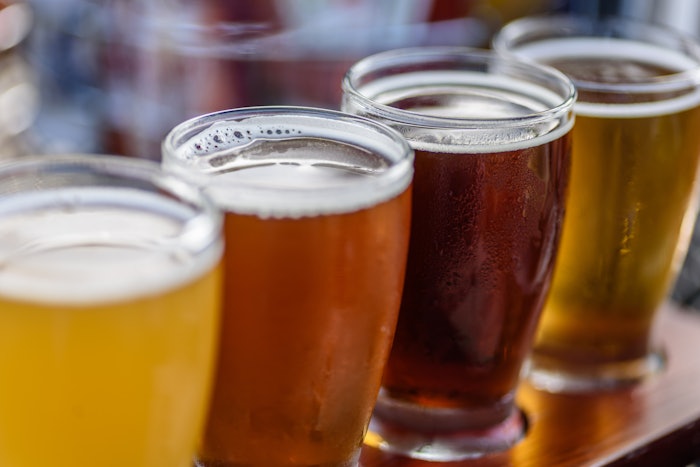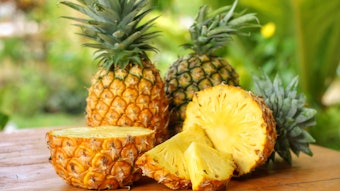
Decanoic acid (FEMA# 2364, CAS# 334-48-5) sits very comfortably between the category of ingredients used primarily for their aroma and the category used primarily for taste effects.
The aroma of this chemical is quite complex. It is distinctly cheesy, with some aspect of the goaty character of octanoic acid. It also has a modest connection to the rather soapy profile of dodecanoic acid. It is pretty much an essential component of dairy flavors, but it can also enhance many other categories.
Note that the dose rates given throughout this article are the levels suggested for use in flavors intended to be dosed at 0.05% in ready-to-drink beverages or in a simple bouillon.
Dairy Flavors
Butter: Decanoic acid, sometimes called capric acid (rather confusingly, given caproic and caprylic acids), is used at varying levels in butter flavors, ranging from 500 ppm up to as high as 5,000 ppm.
Cheese, Blue: Levels in blue cheese flavors also vary, but generally tend to be on the high side, typically around 4,000 ppm.
Cheese, Cheddar: A high level of addition is also very effective in all cheddar cheese flavors, ranging from 5,000 ppm to 6,000 ppm. Similar levels are also used in toasted cheese flavors.
Cream: Fresh cream flavors are a different story. Moderate levels of decanoic acid work best, starting at 500 ppm.
Milk: Five hundred ppm is, unsurprisingly, also a good level in fresh milk flavors.
Milk, Condensed: The choice of level in condensed milk flavors is a little more complicated. Decanoic acid can be used in conjunction with a high level of dodecanoic acid, in which case 1,000 ppm works well. If decanoic acid is used alone, which is quite feasible, then levels can range up to 6,000 ppm.
Yogurt: Two thousand ppm can often be a good level for decanoic acid in yogurt flavors. This can be lower if a more delicate profile is required.
 In beer flavors, the ideal levels are a little surprising. Light, lager-style, beers can benefit from around 300 ppm, but dark beers work best with lower levels, around 100 ppm.Adobe Stock
In beer flavors, the ideal levels are a little surprising. Light, lager-style, beers can benefit from around 300 ppm, but dark beers work best with lower levels, around 100 ppm.Adobe Stock
Fermented Flavors
Beer: Decanoic acid is an important part of all fermented flavors, second perhaps to octanoic acid. In beer flavors, the ideal levels are a little surprising. Light, lager-style, beers can benefit from around 300 ppm, but dark beers work best with lower levels, around 100 ppm.
Brandy: Unsurprisingly, given the aroma contribution from yeast by-products, the ideal level in brandy flavors is much higher, around 1,500 ppm.
Bread: The ideal addition of decanoic acid to bread flavors depends on the type of bread. Low levels work well for some types, but more robust profiles, such as pizza, need around 500 ppm.
Dough: Similar levels, up to 600 ppm, are also effective in fermented dough-style flavors.
Rum: Rum flavors are just about as contrarian as beer flavors and confound expectations. Light rum flavors work well with levels around a thousand ppm, but dark rum flavors only need around 200 ppm.
Whisky: Whisky flavors, in contrast, are quite predictable. One thousand ppm of decanoic acid is a good level of addition.
Wine: Red and white wine flavors are both subject to the same considerations. A relatively mature profile is usually the objective and 200 ppm of decanoic acid is perfect.
To discover decanoic acid in savory, fruit and other flavors, visit Perfumer & Flavorist+'s December 2023 issue.










